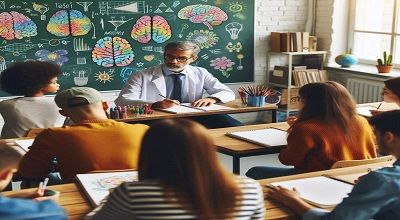Science of Drawing and Memory
It seems that you are interested in the science of drawing and memory. And how it can help you improve your learning and recall. Here Drawing is a powerful encoding strategy that can boost your memory by engaging multiple cognitive processes, such as visual, motor, and semantic. Drawing can also help you overcome the limitations of other memory techniques, such as writing or reading, that may not work well for abstract concepts.
Drawing has been shown to be a reliable and replicable way of enhancing memory performance across different types of information, such as words, pictures, and definitions. Now guys Drawing can also improve memory for both concrete and abstract stimuli, although the benefit may be larger for concrete ones. Drawing may create a link between the verbal and visual codes of the information, making it easier to retrieve later.
More Read…
If you want to learn more about the science of drawing and memory, you can check out some of the web search results that I found for you. For example, you can read an article by Youki Terada on Edutopia that summarizes some of the research findings on this topic. You can also read a brief report by Brady R.T. Roberts and Jeffrey D. Wammes on SpringerLink that explores how drawing can alleviate concreteness effects in memory.
Another source that you can consult is a journal article by Jeffrey D. Wammes, Melissa E. Meade, and Myra A. Fernandes on APA PsycNet that describes their experiments on the influence of drawing on memory. If you are looking for an example of an essay on this topic, you can also read a sample essay by Ivory Research that discusses the effects of doodling on memory. This essay provides some background information, evidence, analysis, and conclusion on how drawing can enhance memory and learning.
Some key points to consider when thinking about the science of drawing and memory are:
- Enhanced Memory: Drawing has been found to enhance memory recall. When individuals create drawings or diagrams to represent information, they often remember it better compared to simply reading or listening to the information. This is known as the “drawing effect.”
- Visualization and Learning: Drawing can aid in learning and problem-solving. Visualizing concepts through drawings can help individuals understand complex ideas, whether it’s in science, mathematics, or other subjects.
- Motor Memory: The physical act of drawing or writing by hand can also have memory benefits. This is known as “motor memory.” The act of physically engaging with information through writing or drawing can reinforce memory.
- Art Therapy: Drawing is also used in therapeutic settings. Art therapy can help individuals process emotions and experiences, which may improve memory and mental health.
- Neuroscientific Insights: Neuroimaging studies have shown that different brain regions are activated. When a person is drawing or viewing drawings. Understanding these brain mechanisms can provide insights into the cognitive processes involved in drawing and memory.
- Educational Implications: The science of drawing and memory has implications for education. Teachers and instructional designers may use drawing as a teaching tool to enhance retention and understanding of material.
- Cross-Disciplinary Research: This field often involves collaboration between artists, educators, psychologists, and neuroscientists. Leading to a more holistic understanding of how drawing and memory are interconnected.
Note:
To get the latest developments and insights in this field, consider consulting recent scientific literature, attending conferences, or following the work of researchers who specialize in this area. Scientific research continually evolves, and the science of drawing and memory is no exception.
